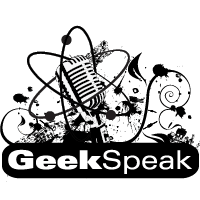Gnu Teaches Robots to not Google and Drive
High School teacher and Ben’s father, Roger Jaffe, joins us for this fun episode of GeekSpeek.
Mr Jaffe's Class
The website that Roger Jaffe uses to manage his class.
More about "Flipped Classroom"
Roger talked about how he “flips” his class – lectures are homework as videos to watch.
Google celebrates 15 years with new Easter Egg
15 years ago Friday, two Stanford students launched their project
New Unix Implementation Turns 30
Thirty years ago, Richard Stallman wrote: “Free Unix! Starting this Thanksgiving I am going to write a complete Unix-compatible software system called GNU (for Gnu’s Not Unix), and give it away free to everyone who can use it. Contributions of time, money, programs and equipment are greatly needed.” And thus began the revolution.
Strawberry Robot - Video
This is the state of the art in robots? Sad, simply sad.
iStir Crock Pot
State of the art in consumer Robotics.
Traders may have gotten last week’s Fed news 7 milliseconds early
Markets swung rapidly on the 2 p.m. announcement last Wednesday, with stocks, bonds, and the price of gold all skyrocketing. Somebody placed massive orders for gold futures contracts betting on exactly that outcome within a millisecond or two of 2 p.m. that day — before the seven milliseconds had passed that would allow the transmission of the information from the Fed’s “lock-up” of media organizations who get an early look at the data and the arrival of that information at Chicago’s futures markets (that’s the time it takes the data to travel at the speed of light. A millisecond is a thousandth of a second). CNBC’s Eamon Javers, citing market analysis firm Nanex, estimates that $600 million in assets could have changed hands in that fleeting moment.
There would seem to be three possibilities: 1) Some trader was extraordinarily lucky, placing a massive bet just before a major announcement that would make that bet highly profitable. 2) There was a leak, either by a media organization with early access to the data or even someone at the Fed. Or 3) The laws of physics have been violated as the information traveled from Washington to Chicago faster than the speed of light.
You can see why Option 2 looks the most plausible.
For a wonderful treatment on Stock Market High-Frequency Trading (and many other things), listen to RadioLab’s Speed episode.
Lego shines as beautiful art in new book
This week, bookstores everywhere will begin getting copies of “Beautiful Lego,” a new book containing some amazing Lego art like: renderings of Apple’s original Macintosh, scenes from Tolkein, and faithful recreations of New York’s post-9/11 World Trade Center site.
The Most Comprehensive Size Comparison of Science-Fictional Spaceships Yet
Awesome chart of science-fictional spaceships compiled by DeviantART user DirkLoechel
Nissan's Autonomous Car Is Road Legal in Japan
Nissan is one of the more ambitious automakers in the driver-less car game, and this week took a notable step forward when its Leaf autonomous vehicle.
Nissan has stated the year 2020 is its deadline for bringing multiple AVs to market.
Governor Cuomo Unveils "Texting Zones" Along NYS Thruway and Highways
Governor Andrew M. Cuomo today continued the state’s efforts to reduce distracted driving by unveiling special “Texting Zones” along the New York State Thruway and State Highways that will give motorists a pull-off area to park and use their mobile devices. Existing Park-n-Ride facilities, rest stops, and parking areas along the Thruway and Highways will dual-function as Texting Zones, and signage will be placed along the highway to inform drivers where the Zones are located. A total of 298 signs will be located along major highways across the state, notifying motorists to 91 Texting Zone locations.
Why iOS 7 is making some users sick
The introduction of fake zooms, parallax, sliding and other changes in Apple’s new iPhone and iPad software has a very real effect on people with vestibular disorders
Protesters Are Dodging Sudan's Internet Shutdown with a Phone-Powered Crowdmap
Since Wednesday afternoon, Sudan’s internet has been sporadically shut off amid a fifth day of protests. Despite the attempt to cut off communications and limit organization and reporting on the ground, a group of tech-savvy people based in Khartoum have developed a map for recording key data about the protests that’s powered by cell networks.
Noncircadian Rhythms
Almost all organisms, from bacteria to mammals, have a circadian clock
A Collision in Saturn's Rings
Our solar system is a big place. Big enough that it
Google’s Open Project lets you share, scale and control apps on a remote display
Open Project sends the entire app from the source device to the receiving screen. It uses a QR code to pair the devices, and then allows the controlling device to define the size and placement of the projection.
Once the app appears on the destination screen, the app is able to receive commands from the receiving touch device as though the it is running locally instead of on the source device.
Apple Maps flaw results in drivers crossing airport runway
Fairbanks International Airport told a local newspaper that in the past three weeks two motorists had driven along the taxiway and across one of its runways.
Apple’s app had directed users along the taxiway but did not specifically tell them to drive onto the runway.
The firm has now issued a temporary fix.
French fines Google for Privacy
French watchdog group ,CNIL, said “On the last day of the three-month time period given to Google, Inc., the company contested the reasoning followed by the CNIL, and notably the applicability of the French data protection law to the services used by residents in France,” the agency wrote on its Web site.
Scientists create never-before-seen form of matter
Working with colleagues at the Harvard-MIT Center for Ultracold Atoms, a group led by Harvard Professor of Physics Mikhail Lukin and MIT Professor of Physics Vladan Vuletic have managed to coax photons into binding together to form molecules

